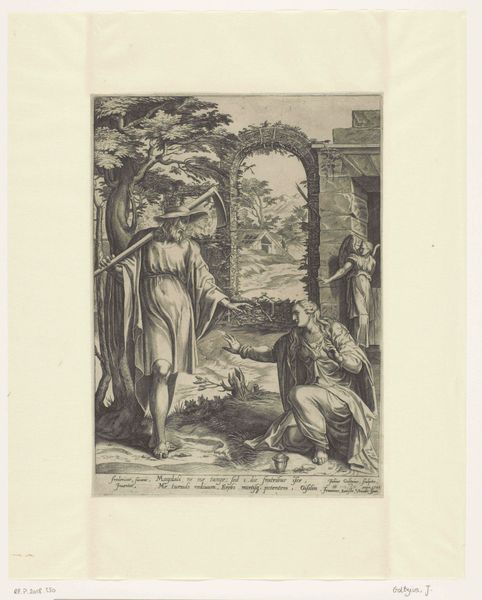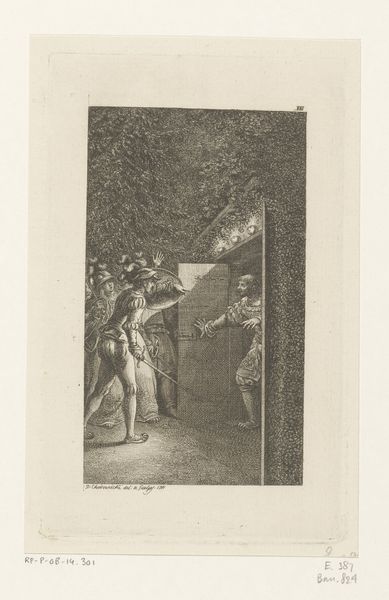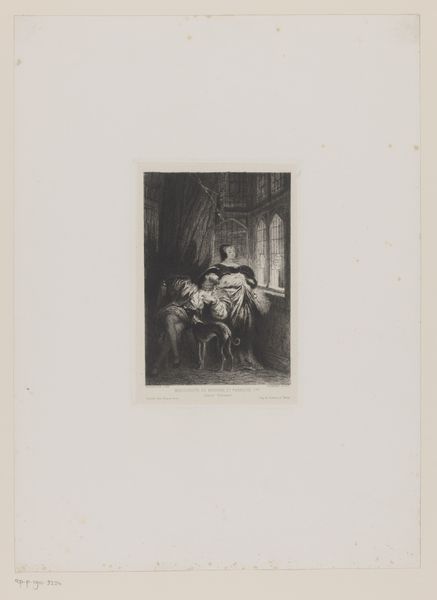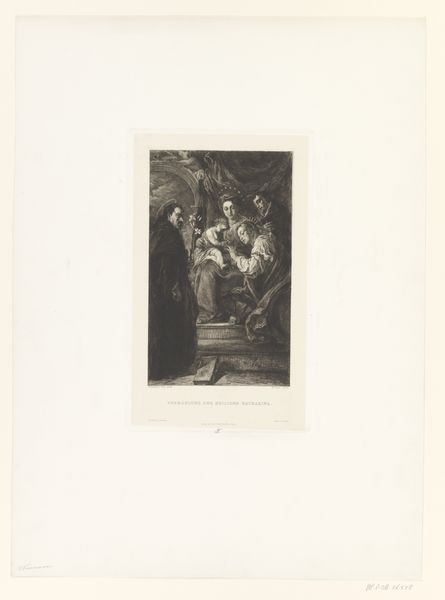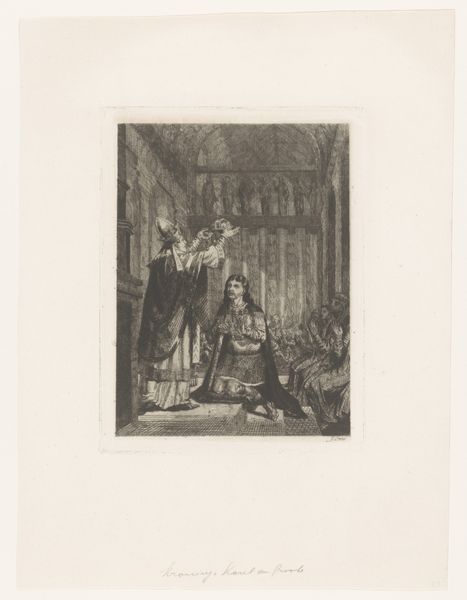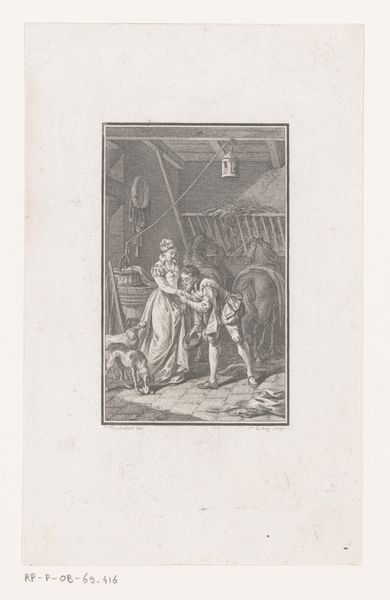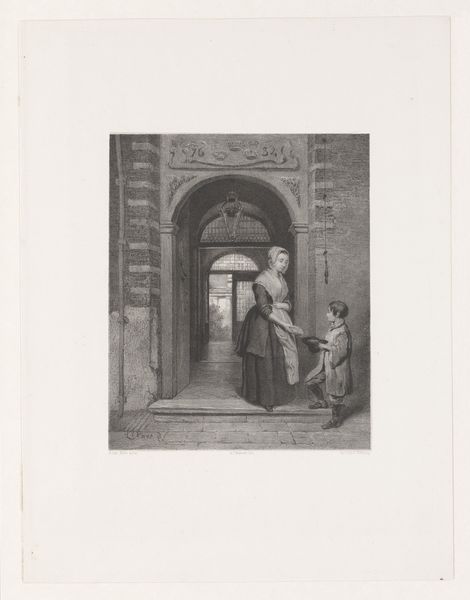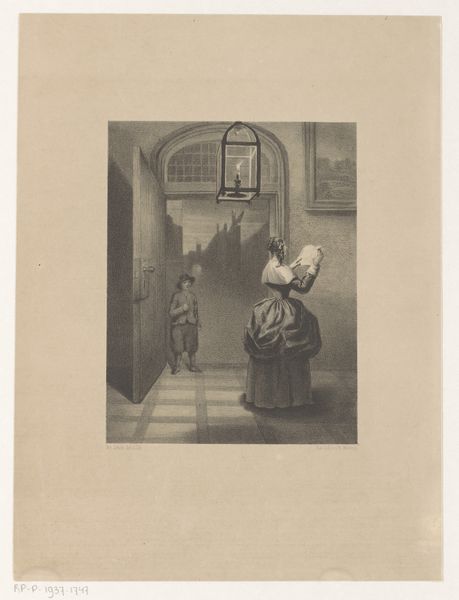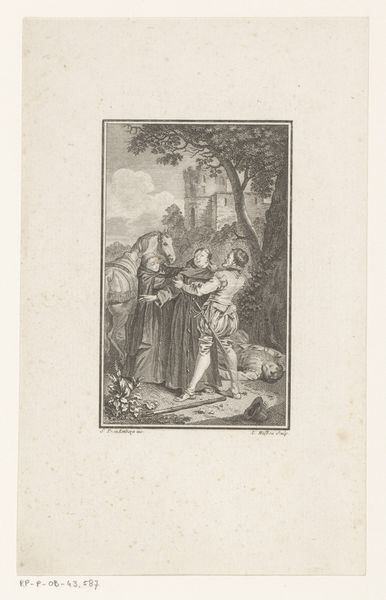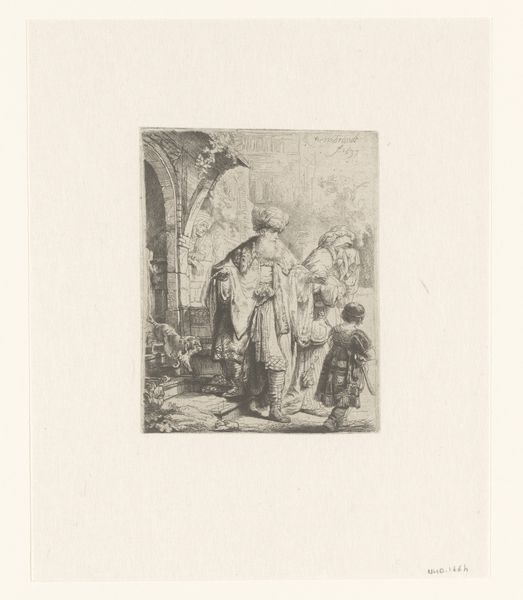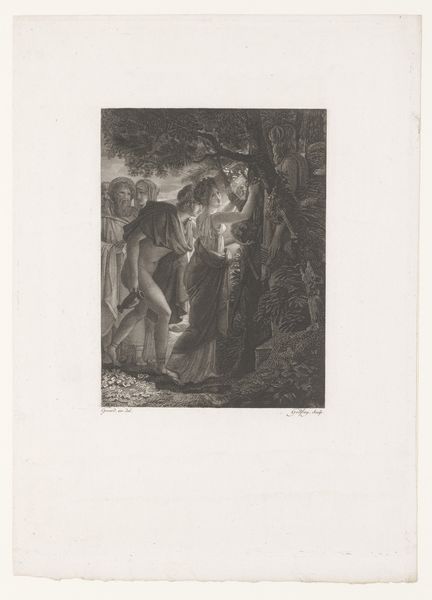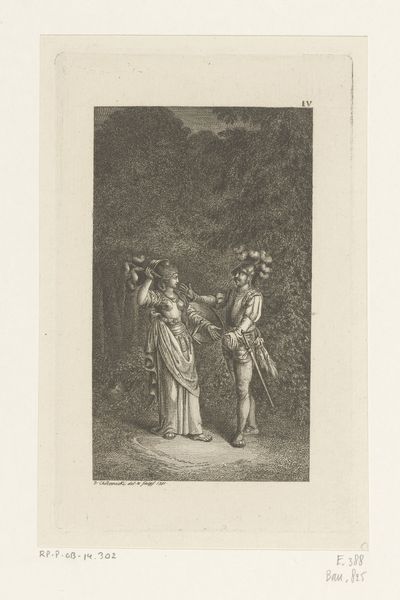
Gevar, Hialte en Hother plotten de moord op Rolf Krage 1781
0:00
0:00
danielnikolauschodowiecki
Rijksmuseum
Dimensions: height 173 mm, width 108 mm
Copyright: Rijks Museum: Open Domain
Curator: This drawing, rendered in ink and etching on paper, is entitled "Gevar, Hialte en Hother plotten de moord op Rolf Krage," created in 1781 by Daniel Nikolaus Chodowiecki. It currently resides here at the Rijksmuseum. Editor: It has an immediately unsettling air. The dark, almost claustrophobic backdrop coupled with the clandestine handshake suggests a story filled with treachery. The composition, placing the figures in what looks like a concealed space, emphasizes secrecy. Curator: The piece aligns with Romanticism’s focus on dramatic narratives and heightened emotional states. Think about the power dynamics in play. We see three figures seemingly involved in a conspiracy—the assassination of King Rolf Krage—placing them within the turbulent historical narratives that Romantic artists often explored, echoing current power struggles around gender, race and political dominance in present societies. Editor: Indeed. Romanticism often mined history for emotionally charged moments, using them as vehicles to explore the darker aspects of the human condition. Here, Chodowiecki uses etching, creating strong contrasts in light and shadow that further amplify this sense of intrigue and unease. The backdrop appears overgrown, almost untamed. Curator: This relates directly to the late 18th-century anxiety regarding the control, the structures and institutions—reflecting shifts in the existing social order, visible in its style but also in its genre. Editor: Do you see a critique here? Genre and history painting in this format…what is its potential reach, its audience? Is it challenging accepted narratives, or reinforcing established societal structures by portraying history this way? It raises interesting questions. The small scale allows it to become a form of dissemination of powerful storytelling. Curator: An excellent point. It speaks to how easily narratives of violence can be distributed. While created centuries ago, contemplating the historical, gendered and raced realities, that may or may not challenge institutional powers continues to provide space for discussion. Editor: Exactly, reflecting on who possesses power, and what consequences that generates, as illustrated in art of the past can lead to a crucial assessment of existing social injustice. It leaves us with a feeling of the weight of these histories, a reminder of both then and now.
Comments
No comments
Be the first to comment and join the conversation on the ultimate creative platform.
